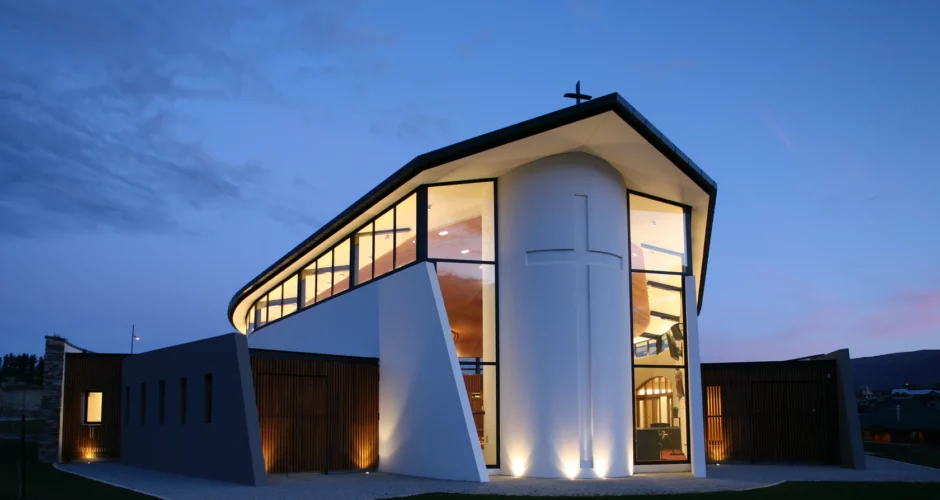
Building Appearance
August 3, 2018 |David Graf
Ninety percent of church visitors base their decisions to visit on the appearance of the building.
I have had the privilege of visiting hundreds, if not thousands, of churches throughout my life, and these visits often bring to the surface one of my pet peeves – churches that don’t seem to care at all about the appearance of their buildings. I understand that some churches are simply stuck in situations where their buildings are beyond help, but this is rare. In most cases, there are simple solutions that could be implemented that would make a world of difference.
. . . one of the missions of the church is to reach out to unbelievers, and they tend to not be quite as spiritually-minded in their assessment of church facilities.
Some wear their church building plights as a badge of honor – “It’s not about the building.” Yes, that is very true for the believer; however, one of the missions of the church is to reach out to unbelievers, and they tend to not be quite as spiritually-minded in their assessment of church facilities. I’ve heard a statistic that somewhere in the neighborhood of 90 percent of church visitors base their decisions to visit on the appearance of the building. In their unregenerate state, their decision to return in future weeks could very much be about the building. Even Christians care enough to let the building appearance influence their church choices – they may not always communicate this (let’s face it, it sounds a lot more spiritual to choose a church solely because of its teaching or worship style), but I’ve heard enough comments over the years to know that appearance is a factor. And, while a mature believer might scoff at the ones who let buildings influence their church choices, in our role of making disciples, aren’t we called to minister to those who are young and weak in their faith and, perhaps, are not ready to be building martyrs?
The greatest thing that my HGTV/DIY Network addiction has produced in me is an understanding that almost no “ugly building crisis” is hopeless.
I’m an HGTV/DIY Network junkie – I love shows that are about transforming ugly spaces into things of beauty. I’m pretty certain that God wired me to like this in preparation for my work here at Orchard Alliance. A love for real estate, construction, and renovation makes my work with churches that much more enjoyable. It’s come in handy, too, as I am usually able to see the vision of churches that hope to use Orchard Alliance’s loans to purchase dilapidated buildings and turn them into inviting places of worship. The greatest thing that my HGTV/DIY Network addiction has produced in me is an understanding that almost no “ugly building crisis” is hopeless.
One of the greatest facility offenses perpetrated is simply “hoarding” – keeping piles of unnecessary stuff. This usually isn’t because the church pastor and leaders are hoarders – rather, it’s because they’re just too nice and don’t want to offend anyone. Church people often donate to their church things that should only be going to the trash, or maybe Goodwill. “I don’t want this once state-of-the-art 8-track player anymore, but I bet my church could use it.”
I strongly encourage churches to have design committees, not just for new buildings, but for old buildings, too.
This twisted donative intent spills over into the furniture world. Why is it that Christians, when they want to replace their current junky furniture at home with new, sleek furniture, feel that their church would somehow be “blessed” by receiving their unwanted junk? If it’s no longer appealing to sit on that stuff at home, what is different about church-goers that they would take pleasure in doing so at their house of worship?
I strongly encourage churches to have design committees, not just for new buildings, but for old buildings, too. Make up a committee of people with good taste and make a policy that all donations of furniture and décor must first be approved by that committee. If something doesn’t pass muster, perhaps the policy could be that it will be sold and the proceeds can go to a future furniture fund. Personally, I’d rather have my church be under-furnished with nice things than stuffed full of junky hand-me-downs (youth rooms may be the only culturally-acceptable exception).
One of the easiest and cheapest solutions to a tired looking building is a good scrub down and a coat of paint.
The second offense is overdue maintenance. I understand that some maintenance items are cost-prohibitive, but many offenses are easily fixed at very low cost. Holes in walls, doors that don’t function properly, light bulbs burned out, etc. usually take nothing more than a few dollars and someone who cares to fix them. By far, the biggest maintenance offense is dingy walls. Church buildings get a lot of use – sometimes very rough use, and walls end up looking beat up. One of the easiest and cheapest solutions to a tired looking building is a good scrub down and a coat of paint.
And, speaking of paint, nothing can make a room look more appealing than changing the outdated robin’s egg blue and celery green colors to something warm and inviting. Current “in” colors are nothing close to the typical colors we see inside church buildings. It’s amazing how just a gallon of paint can turn a cold, drab room into a place you want to spend time in. Again, create a design committee of people with good taste who care about appearance. Look for people who come to church wearing the latest fashions, and people whose homes are warm and inviting. These are probably the people who are best suited for creating a church atmosphere that will also be warm and inviting.
Often, it’s not so much about having beautiful, eye-popping landscaping as it is about keeping what you have neat and tidy.
Finally, how is the general appearance of the outside of your building? Often, it’s not so much about having beautiful, eye-popping landscaping as it is about keeping what you have neat and tidy. I have a friend whose house has a narrow bed of gravel next to the driveway. I was used to seeing some of the gravel spilled into the driveway, as is the typical end result of all gravel beds. Recently, I was at this friend’s house and I immediately noticed that all the loose gravel had been swept up, leaving the driveway gravel-free. This one simple act of tidying up left a very different impression as I walked up that driveway – it seemed to make the whole house appear to be much nicer and more inviting. It costs almost nothing to pull weeds in flower beds and lay down new mulch, or to sweep garbage and loose gravel off of your parking lot, or to trim back overgrown bushes and trees, but the impact can be immeasurable.
So, whether it’s throwing out some junk, replacing a broken window, applying a new coat of paint, or tidying up your landscaping, please make the effort to make your church the most warm and inviting facility that it can possibly be. Your congregation will appreciate the change, and you never know what impact it may have on the next church-hunting person who stops in for a visit.

David Graf
Vice President for Lending
